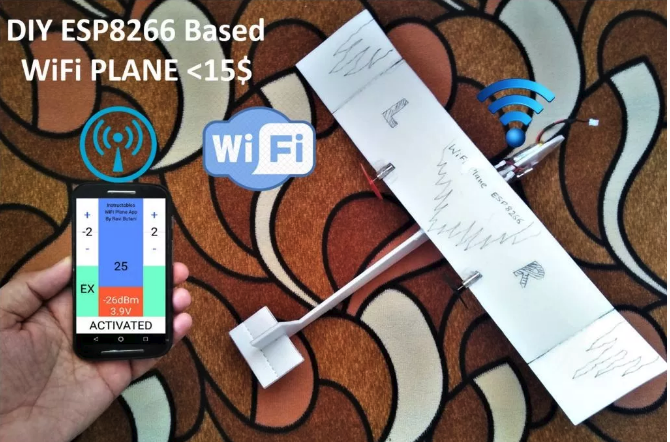- Home
- Hardware
- SDKs
- Cloud
- Solutions
- Support
- Ecosystem
- Company
- Contact
news
ESP8266-based WiFi-controlled DIY Model Airplane
Reporting from Shanghai, China
Jun 5, 2018
Ravi Butani is an electronics engineer from India, who can show you how to create an ESP8266-based park flyer for only 15 USD or less.
If you have ever dreamt of building your own remote-controlled park flyer, then this article is for you! You can now create a DIY model airplane with a 15-minute flying time, which you can control with your mobile phone (Android app over WiFi). The proposed plane is very stable and fairly slow, which makes it safe and easy-to-use even for children.
This model aircraft has a 70-meter line-of-sight range, which is yet another proof of the strong Wi-Fi coverage that ESP8266 offers. The aircraft must be connected to a mobile phone that functions as a Wi-Fi hotspot and remote controller. For navigation purposes, a real-time received signal-strength indication (RSSI) is displayed on the Android app. When the plane is about to go outside of the functional range, the RSSI falls below -95 dBm and the mobile phone starts vibrating. This notifies the user to prevent the plane from going outside the range of the mobile Wi-Fi access point. The same notification occurs, when the battery voltage falls below 3.7V. Again, the mobile phone starts vibrating, so that the user lands the plane before its battery gets fully drained. The plane is totally gesture-controlled, meaning that when the mobile phone is tilted towards the left, the plane, too, turns left, and vice versa.

The building time required for this plane is approximately five to six hours. The whole process requires basic soldering skills, as well as some programming knowledge of ESP8266 using the Arduino IDE. Readers can get all the details on how to build this model aircraft by checking out Ravi Butani’s original blogpost.
We are pleased to announce that Ravi Butani and Espressif Systems will work together towards launching an improved version of this project soon. The optimizations we are currently considering have to do with the app software, the credentials needed for using the Wi-Fi Access Point, the appearance of the aircraft’s main body and the flexibility of its flight.


 LinkedIn
LinkedIn 微信
微信
 Twitter
Twitter Facebook
Facebook
